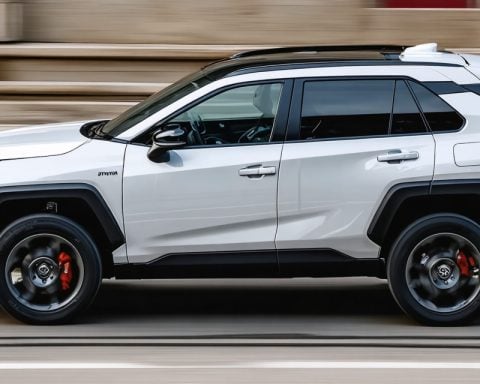Disparities in Charging Infrastructure Threaten EV Adoption in the UK
The UK’s shift towards electric vehicles (EVs) is facing significant hurdles, primarily due to unequal access to charging stations. A recent report from Stonehaven reveals that the challenge has evolved from technological issues to matters of urban management and social equity.
In London, the inconsistency in on-street charging point availability highlights this disparity. For instance, Harrow boasts only 63 charging stations, while Westminster offers nearly 2,700. The study indicates that residents in wealthier areas enjoy far better access to charging facilities, leaving those in lower-income neighborhoods at a disadvantage.
A closer look at employment statistics in London reveals troubling patterns: Bexley and Havering together have 14,000 workers in transport-related jobs but only 260 public chargers. In contrast, Hammersmith and Fulham, with far fewer at around 3,000 workers in the same sectors, benefits from over 2,600 chargers.
Moreover, the cost of public charging is a major barrier, often six to ten times higher than charging at home, where specific night-time tariffs make electricity considerably cheaper. This economic disparity is exacerbated by the legal limitations on running power cables along sidewalks, further disadvantaging those without private driveways.
As the government struggles to keep pace with rising EV adoption, it must urgently address the inequalities in infrastructure to ensure a smoother transition for all drivers.
The EV Charging Divide: A Call to Action for a Fairer Future
Disparities in Charging Infrastructure Threaten EV Adoption in the UK
The transition to electric vehicles (EVs) in the UK is gaining momentum, yet significant roadblocks remain, particularly in the realm of charging infrastructure. A recent report by Stonehaven sheds light on the widening chasm in access to charging stations across the nation, signaling a shift in focus from technological challenges to critical issues of urban management and social equity.
Current Charging Infrastructure Landscape
A stark contrast in the availability of public charging stations is evident in major cities, particularly London. For instance, the borough of Harrow has only 63 charging points, while Westminster boasts an impressive 2,700. This discrepancy suggests that residents in affluent areas have access to far superior charging infrastructure compared to their counterparts in less wealthy neighborhoods.
Moreover, the employment scenarios in these areas reveal a concerning trend. In Bexley and Havering, which host a combined workforce of approximately 14,000 people in transport-related jobs, only 260 public charging points are available. In contrast, Hammersmith and Fulham caters to around 3,000 transport workers but benefits from over 2,600 charging stations, highlighting the inequities inherent in the current system.
Economic Barriers to Charging Access
The economic barriers to EV charging present another significant challenge. Public charging costs can be exorbitant, often ranging from six to ten times higher than home charging rates. While night-time tariffs make home charging more appealing, this option remains inaccessible for many who lack dedicated driveways or easy access to electrical power.
Legal restrictions on extending power lines along sidewalks further complicate efforts to provide equitable charging solutions for urban residents, particularly those living in rented accommodations or in properties without private access.
Pros and Cons of Current EV Charging Infrastructure
Pros:
– Increased public awareness and desire for switch to EVs.
– Growing number of private charging solutions emerging.
– Investment in renewable energy sources for charging stations.
Cons:
– Significant disparities in charging station availability across socio-economic lines.
– High costs of public charging deter low-income users.
– Limited regulatory framework facilitating equitable infrastructure.
Insights and Trends
The EV market in the UK is set to grow, yet without strategic interventions to equalize access to charging points, the risk of social inequality will deepen. Recent trends indicate a strong shift toward sustainability, but the benefits of this transition must be universally accessible.
Future Predictions
Predictions suggest that by 2030, the UK could see a substantial increase in EV adoption rates. However, to sustain this growth, a comprehensive strategy focusing on equitable charging infrastructure must be implemented. This includes incentivizing the installation of charging points in underserved areas and revisiting regulations surrounding public utility access.
The Path Forward
To address these disparities effectively, the UK government and local councils must prioritize developing a more balanced approach to EV charging infrastructure. Collaboration with private companies, enhanced funding for public chargers, and innovative solutions like mobile charging units could help bridge the current gap.
For more insights on the state of EV charging infrastructure and the future of electric vehicles in the UK, visit Energy Saving Trust.













